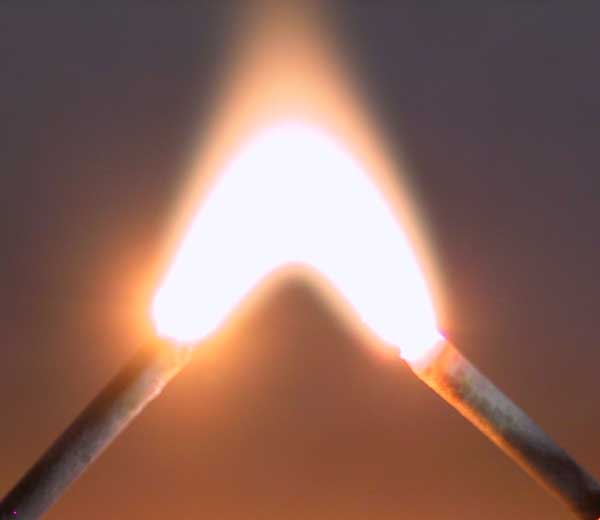|
BRICSat-P
BRICSat-P or OSCAR 83 (NO-83) previously known as PSat-B, is a U.S. technology demonstration satellite and an amateur radio satellite for Packet Radio. BRICSat-P (Ballistic Reinforced Communication Satellite) is a low cost 1.5U CubeSat built by the U.S. Naval Academy Satellite Lab in collaboration with George Washington University, that will demonstrate on-orbit operation of a Micro-Cathode Arc Thruster (μCAT) electric propulsion system and carries an amateur communication payload. Mission A four μCAT thruster head system was placed on one side of the spacecraft around the center of gravity and will de-tumble the satellite from its initial expulsion, demonstrate rotational control about 2 axes, and perform a delta-V end of life scenario. Orbital analyses performed indicate that the four thruster-head system is able to fit in a 1.5U Cubesat with low power consumption such that other subsystems such as communication systems can perform normally. Dynamics analysis has been performed ... [...More Info...] [...Related Items...] OR: [Wikipedia] [Google] [Baidu] |
Amateur Radio Satellite
An amateur radio satellite is an artificial satellite built and used by amateur radio operators. It forms part of the Amateur-satellite service. These satellites use amateur radio frequency allocations to facilitate communication between amateur radio stations. Many amateur satellites receive an OSCAR designation, which is an acronym for Orbiting Satellite Carrying Amateur Radio. The designation is assigned by AMSAT, an organization which promotes the development and launch of amateur radio satellites. Because of the prevalence of this designation, amateur radio satellites are often referred to as OSCARs. These satellites can be used free of charge by licensed amateur radio operators for voice ( FM, SSB) and data ( AX.25, packet radio, APRS) communications. Currently, over 18 fully operational amateur radio satellites are in orbit. They may be designed to act as repeaters, as linear transponders, and as store and forward digital relays. Amateur radio satellites have helpe ... [...More Info...] [...Related Items...] OR: [Wikipedia] [Google] [Baidu] |
George Washington University
, mottoeng = "God is Our Trust" , established = , type = Private federally chartered research university , academic_affiliations = , endowment = $2.8 billion (2022) , president = Mark S. Wrighton , provost = Christopher Bracey , students = 27,159 (2016) , undergrad = 11,244 (2016) , postgrad = 15,486 (2016) , other = 429 (2016) , faculty = 2,663 , city = Washington, D.C. , country = U.S. , campus = Urban, , former_names = Columbian College (1821–1873)Columbian University (1873–1904) , sports_nickname = Colonials , mascot = George , colors = Buff & blue , sporting_affiliations = NCAA Division I – A-10 , website = , free_label = Newspa ... [...More Info...] [...Related Items...] OR: [Wikipedia] [Google] [Baidu] |
Center Of Gravity
In physics, the center of mass of a distribution of mass in space (sometimes referred to as the balance point) is the unique point where the weighted relative position of the distributed mass sums to zero. This is the point to which a force may be applied to cause a linear acceleration without an angular acceleration. Calculations in mechanics are often simplified when formulated with respect to the center of mass. It is a hypothetical point where the entire mass of an object may be assumed to be concentrated to visualise its motion. In other words, the center of mass is the particle equivalent of a given object for application of Newton's laws of motion. In the case of a single rigid body, the center of mass is fixed in relation to the body, and if the body has uniform density, it will be located at the centroid. The center of mass may be located outside the physical body, as is sometimes the case for hollow or open-shaped objects, such as a horseshoe. In the case of a di ... [...More Info...] [...Related Items...] OR: [Wikipedia] [Google] [Baidu] |
Amateur Radio Satellites
An amateur () is generally considered a person who pursues an avocation independent from their source of income. Amateurs and their pursuits are also described as popular, informal, self-taught, user-generated, DIY, and hobbyist. History Historically, the amateur was considered to be the ideal balance between pure intent, open mind, and the interest or passion for a subject. That ideology spanned many different fields of interest. It may have its roots in the ancient Greek philosophy of amateur athletes competing in the Olympics. The ancient Greek citizens spent most of their time in other pursuits, but competed according to their natural talents and abilities. The "gentleman amateur" was a phenomenon among the gentry of Great Britain from the 17th century until the 20th century. With the start of the Age of Reason, with people thinking more about how the world works around them, (see science in the Age of Enlightenment), things like the cabinets of curiosities, and the w ... [...More Info...] [...Related Items...] OR: [Wikipedia] [Google] [Baidu] |
Satellites Orbiting Earth
A satellite or artificial satellite is an object intentionally placed into orbit in outer space. Except for passive satellites, most satellites have an electricity generation system for equipment on board, such as solar panels or radioisotope thermoelectric generators (RTGs). Most satellites also have a method of communication to ground stations, called transponders. Many satellites use a standardized bus to save cost and work, the most popular of which is small CubeSats. Similar satellites can work together as a group, forming constellations. Because of the high launch cost to space, satellites are designed to be as lightweight and robust as possible. Most communication satellites are radio relay stations in orbit and carry dozens of transponders, each with a bandwidth of tens of megahertz. Satellites are placed from the surface to orbit by launch vehicles, high enough to avoid orbital decay by the atmosphere. Satellites can then change or maintain the orbit by propulsion, ... [...More Info...] [...Related Items...] OR: [Wikipedia] [Google] [Baidu] |
OSCAR
Oscar, OSCAR, or The Oscar may refer to: People * Oscar (given name), an Irish- and English-language name also used in other languages; the article includes the names Oskar, Oskari, Oszkár, Óscar, and other forms. * Oscar (Irish mythology), legendary figure, son of Oisín and grandson of Finn mac Cumhall Places * Oscar, Kentucky, an unincorporated community * Oscar, Louisiana, an unincorporated community * Oscar, Missouri, an unincorporated community * Oscar, Oklahoma, an unincorporated community * Oscar, Pennsylvania, an unincorporated community * Oscar, Texas, an unincorporated community * Oscar, West Virginia, an unincorporated community * Lake Oscar (other) * Oscar Township, Otter Tail County, Minnesota, a civil township Animals * Oscar (bionic cat), a cat that had implants after losing both hind paws * Oscar (bull), #16, (d. 1983) a ProRodeo Hall of Fame bucking bull * Oscar (fish), ''Astronotus ocellatus'' * Oscar (therapy cat), cat purported ... [...More Info...] [...Related Items...] OR: [Wikipedia] [Google] [Baidu] |
Brno University Of Technology
Brno University of Technology (abbreviated: ''BUT''; in Czech: Vysoké učení technické v Brně – Czech abbreviation: ''VUT'') is a university located in Brno, Czech Republic. Being founded in 1899 and initially offering a single course in civil engineering, it grew to become a major technical Czech university with over 18,000 students enrolled at 8 faculties and 2 university institutes. History The Jesuits dominated university education in Moravia at the beginning of the 18th century as they controlled the University of Olomouc. The focus on theology and philosophy was not welcomed by the Moravian nobility. The nobility initiated the commencement of law education at the University of Olomouc in 1679. Later in 1725, the Moravian nobility enforced the establishment of the Academy of Nobility in Olomouc. Law and economy, mathematics, geometry, civil and military architecture, history, and geography were lectured there. As it aimed to promote knighthood also foreign la ... [...More Info...] [...Related Items...] OR: [Wikipedia] [Google] [Baidu] |
Bandwidth (signal Processing)
Bandwidth is the difference between the upper and lower frequencies in a continuous band of frequencies. It is typically measured in hertz, and depending on context, may specifically refer to '' passband bandwidth'' or '' baseband bandwidth''. Passband bandwidth is the difference between the upper and lower cutoff frequencies of, for example, a band-pass filter, a communication channel, or a signal spectrum. Baseband bandwidth applies to a low-pass filter or baseband signal; the bandwidth is equal to its upper cutoff frequency. Bandwidth in hertz is a central concept in many fields, including electronics, information theory, digital communications, radio communications, signal processing, and spectroscopy and is one of the determinants of the capacity of a given communication channel. A key characteristic of bandwidth is that any band of a given width can carry the same amount of information, regardless of where that band is located in the frequency spectrum. For exam ... [...More Info...] [...Related Items...] OR: [Wikipedia] [Google] [Baidu] |
Transponder
In telecommunications, a transponder is a device that, upon receiving a signal, emits a different signal in response. The term is a blend of ''transmitter'' and ''responder''. In air navigation or radio frequency identification, a flight transponder is an automated transceiver in an aircraft that emits a coded identifying signal in response to an interrogating received signal. In a communications satellite, a satellite transponder receives signals over a range of uplink frequencies, usually from a satellite ground station; the transponder amplifies them, and re-transmits them on a different set of downlink frequencies to receivers on Earth, often without changing the content of the received signal or signals. Satellite/broadcast communications A communications satellite’s channels are called transponders because each is a separate transceiver or repeater. With digital video data compression and multiplexing, several video and audio channels may travel through a single trans ... [...More Info...] [...Related Items...] OR: [Wikipedia] [Google] [Baidu] |
Automatic Packet Reporting System
Automatic Packet Reporting System (APRS) is an amateur radio-based system for real time digital communications of information of immediate value in the local area. Data can include object Global Positioning System (GPS) coordinates, weather station telemetry, text messages, announcements, queries, and other telemetry. APRS data can be displayed on a map, which can show stations, objects, tracks of moving objects, weather stations, search and rescue data, and direction finding data. APRS data is typically transmitted on a single shared frequency (depending on country) to be repeated locally by area relay stations (digipeaters) for widespread local consumption. In addition, all such data are typically ingested into the APRS Internet System (APRS-IS) via an Internet-connected receiver (IGate) and distributed globally for ubiquitous and immediate access. Data shared via radio or Internet are collected by all users and can be combined with external map data to build a shared live v ... [...More Info...] [...Related Items...] OR: [Wikipedia] [Google] [Baidu] |
Delta-V
Delta-''v'' (more known as " change in velocity"), symbolized as ∆''v'' and pronounced ''delta-vee'', as used in spacecraft flight dynamics, is a measure of the impulse per unit of spacecraft mass that is needed to perform a maneuver such as launching from or landing on a planet or moon, or an in-space orbital maneuver. It is a scalar that has the units of speed. As used in this context, it is not the same as the physical change in velocity of the vehicle. As a simple example, take a conventional rocket-propelled spacecraft which achieves thrust by burning fuel. The spacecraft's delta-''v'' is the change in velocity that spacecraft can achieve by burning its entire fuel load. Delta-''v'' is produced by reaction engines, such as rocket engines, and is proportional to the thrust per unit mass and the burn time. It is used to determine the mass of propellant required for the given maneuver through the Tsiolkovsky rocket equation. For multiple maneuvers, delta-''v'' ... [...More Info...] [...Related Items...] OR: [Wikipedia] [Google] [Baidu] |
Electric Arc
An electric arc, or arc discharge, is an electrical breakdown of a gas that produces a prolonged electrical discharge. The electric current, current through a normally Electrical conductance, nonconductive medium such as air produces a plasma (physics), plasma; the plasma may produce visible light. An arc discharge is characterized by a lower voltage than a glow discharge and relies on thermionic emission of electrons from the electrodes supporting the arc. An archaic term is voltaic arc, as used in the phrase "voltaic arc lamp". Techniques for arc suppression can be used to reduce the duration or likelihood of arc formation. In the late 19th century, Arc lamp, electric arc lighting was in wide use for Street light#Arc lamps, public lighting. Some low-pressure electric arcs are used in many applications. For example, fluorescent lamp, fluorescent tubes, mercury, sodium, and metal-halide lamps are used for lighting; xenon arc lamps have been used for movie projectors. Electric a ... [...More Info...] [...Related Items...] OR: [Wikipedia] [Google] [Baidu] |







